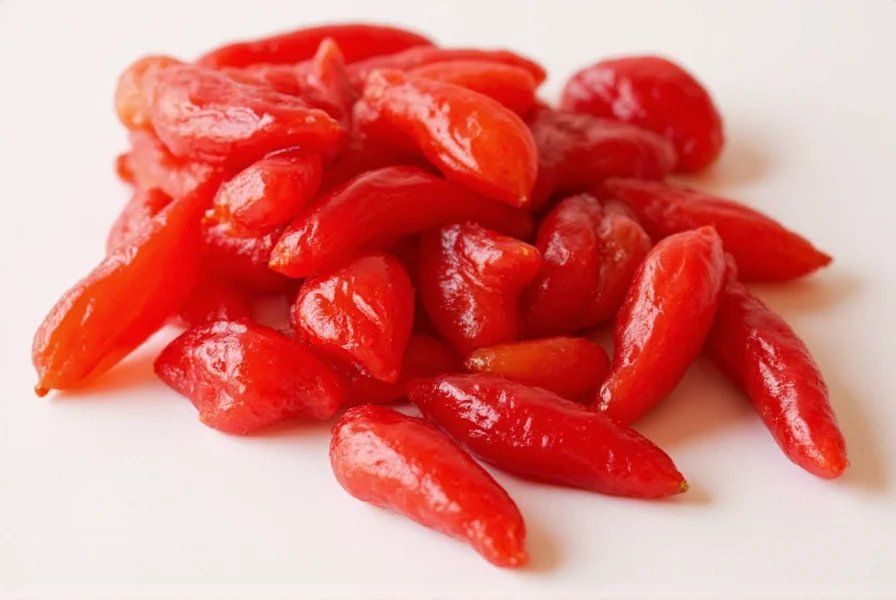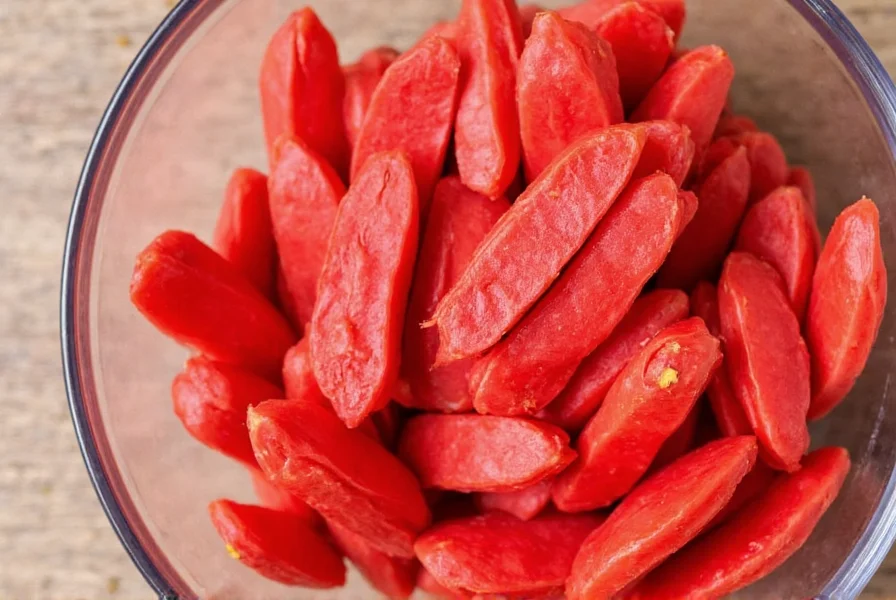Understanding the unique characteristics of red pickled ginger helps elevate your culinary experiences, particularly when enjoying Japanese cuisine. This vibrant condiment plays a specific role in traditional dining that differs from its more common yellow counterpart.
The Science Behind the Color
The natural pink color in authentic red pickled ginger comes from young ginger root's anthocyanins—water-soluble pigments that react with the vinegar in the pickling solution. When fresh, tender ginger is submerged in rice vinegar, these compounds transform from colorless to a beautiful rosy pink. Some commercial producers add a touch of umeboshi (pickled plum) vinegar to enhance this natural coloring process without artificial dyes.
Traditional Preparation Methods
Chefs prepare red pickled ginger using specific techniques that preserve both color and texture:
| Ingredient | Traditional Ratio | Purpose |
|---|---|---|
| Young ginger | 500g | Provides tender texture and natural coloring compounds |
| Rice vinegar | 250ml | Creates acidic environment for pickling and color development |
| Sugar | 100g | Counteracts vinegar's sharpness and enhances natural sweetness |
| Umeboshi vinegar (optional) | 1-2 tbsp | Boosts pink color naturally without artificial dyes |
Professional chefs recommend using ginger harvested in early summer when the rhizomes are youngest and most tender. The preparation process involves thinly slicing the peeled ginger, sprinkling with salt to draw out excess moisture, then combining with the vinegar-sugar solution. Unlike regular pickled ginger, red pickled ginger typically requires only 24-48 hours of marinating to achieve optimal color and flavor.
Red Pickled Ginger vs. Regular Pickled Ginger
Many people confuse these two distinct condiments, but they serve different culinary purposes:
- Red pickled ginger (gari/beni shoga): Made from young ginger, has a delicate pink color, milder flavor, and is primarily served with sushi as a palate cleanser
- Regular yellow pickled ginger (shoga): Made from mature ginger, maintains natural yellow color, has stronger ginger flavor, and often used in cooked dishes or as a condiment for rice bowls
The difference between red and regular pickled ginger extends beyond appearance. Red pickled ginger contains less gingerol (the compound responsible for ginger's heat), resulting in a more subtle taste that won't overpower delicate fish flavors in sushi. This makes it the preferred choice for traditional sushi presentations where the goal is to refresh the palate between different types of fish.
Culinary Applications Beyond Sushi
While traditionally served with sushi, red pickled ginger has versatile uses that home cooks can explore:
- As a colorful garnish for rice bowls and noodle dishes
- Chopped finely and mixed into salad dressings for subtle tang
- Paired with rich foods like tonkatsu to cut through油腻ness
- Added to bento boxes for visual appeal and flavor contrast
- Used as a topping for avocado toast for an unexpected flavor dimension
When incorporating red pickled ginger into recipes, remember that its delicate flavor works best as a finishing element rather than a cooking ingredient. Adding it at the end preserves both its vibrant color and subtle taste profile. The benefits of red pickled ginger in meal presentation extend beyond aesthetics—its mild acidity helps balance rich flavors in many Japanese dishes.
Storage Guidelines for Maximum Freshness
Proper storage maintains both the color and crisp texture of red pickled ginger:
- Always keep submerged in its pickling liquid
- Store in airtight glass container in the refrigerator
- Use clean utensils to prevent contamination
- Consume within 2-3 months for optimal quality
If the pink color begins fading to yellow, this indicates the ginger is losing its freshness. While still safe to eat, the flavor profile changes as the anthocyanins break down. For homemade batches, adding a small amount of fresh umeboshi vinegar can sometimes revive the color.
Nutritional Profile and Flavor Notes
Red pickled ginger contains similar nutritional compounds to fresh ginger but in modified forms due to the pickling process. The fermentation creates beneficial probiotics while preserving ginger's natural antioxidants. Unlike raw ginger, the pickling process reduces the pungent compounds, resulting in a milder taste that appeals to those sensitive to strong ginger flavors.
When selecting red pickled ginger, look for products with consistent pink coloring throughout the slices. Avoid specimens with brown spots or overly soft texture, which indicate age or improper storage. High-quality red pickled ginger should have a crisp bite and balanced sweet-sour flavor without overwhelming vinegar taste.
Where to Find Authentic Red Pickled Ginger
Authentic red pickled ginger appears in these forms:
- Specialty Japanese grocery stores (often near the sushi ingredients)
- High-end supermarkets with dedicated Asian food sections
- Online retailers specializing in Japanese ingredients
- Some sushi restaurants sell it by the container
When shopping for red pickled ginger, check the ingredient list for artificial coloring agents. Traditional varieties rely on natural coloring processes, while cheaper alternatives might use synthetic dyes. The difference between authentic and artificially colored red pickled ginger becomes apparent in both flavor complexity and color stability.

Creating Your Own Red Pickled Ginger at Home
Making red pickled ginger requires minimal ingredients but precise timing:
- Select young ginger with smooth, thin skin
- Peel and thinly slice (about 1/16 inch thick)
- Sprinkle with salt and let sit for 30 minutes
- Rinse and pat dry thoroughly
- Combine rice vinegar, sugar, and optional umeboshi vinegar
- Pour hot liquid over ginger in sterilized jar
- Cool to room temperature, then refrigerate
The secret to achieving the perfect pink shade lies in using ginger harvested in May or June when the rhizomes contain the highest concentration of anthocyanins. This seasonal aspect explains why traditionally made red pickled ginger often tastes superior to year-round commercial varieties.











 浙公网安备
33010002000092号
浙公网安备
33010002000092号 浙B2-20120091-4
浙B2-20120091-4